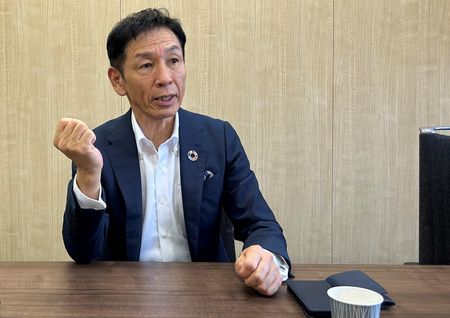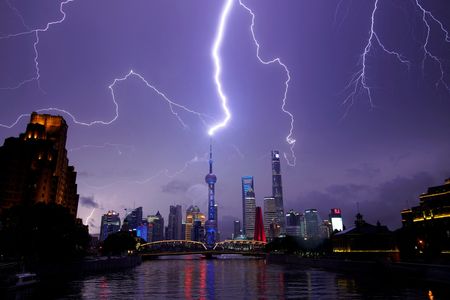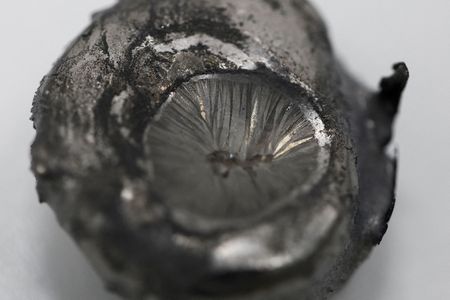By Katya Golubkova and Yuka Obayashi
TOKYO (Reuters) -Japan aims to start planning a national floating wind test centre next year, a senior industry official said, vowing to pursue a path of wind power growth despite a recent setback when Mitsubishi quit three projects.
Mitsubishi-led consortia dropped plans last month to build 1.8 gigawatt (GW) in three offshore windmills won in Japan’s first major state auction in 2021, dealing a blow to the sector seen as key to cutting dependence on imported fuels.
“We must conduct verification tests in Japanese waters as Japan’s ocean and weather conditions differ from those in Europe,” said Masakatsu Terazaki, chairman of the Floating Offshore Wind Technology Research Association(FLOWRA).
In an interview on Tuesday, he told Reuters the association planned to discuss details such as functions and equipment, while also stressing the necessity for such a centre to the government.
Japan should work with Scotland’s national floating wind test centre, the EMEC, and Norway’s Marine Energy Test Centre, the METCentre to draw on their extensive experience, he added.
Japan runs seven offshore wind farms, two small floating turbines among them, with a total capacity of 253 megawatt (MW) at end-2024, the Japan Wind Power Association says, but it bets on large projects to boost energy security.
The country is targeting 45 GW of offshore wind pipeline by 2040, with the latter target including 15 GW or more of floating wind across its vast exclusive economic zone (EEZ), the world’s sixth largest.
FLOWRA, set up last year, groups 21 domestic companies, such as liquefied natural gas (LNG) buyers JERA and Tokyo Gas. It has signed cooperation pacts with Britain and Norway, among others, for floating wind technology studies.
Britain has the world’s second biggest installed offshore wind capacity after China while Norway runs Hywind Tampen, the largest floating offshore wind farm in operation to date.
Japan aims to have a pipeline of the first large-scale floating wind project in fiscal 2029, a target to which FLOWRA is contributing, Terazaki said.
Electricity demand is seen growing 6% in Japan by 2035, driven by data centres and semiconductor plants. While nuclear power and LNG will help, renewables are essential, he added.
Terazaki said his biggest concern was that Mitsubishi’s withdrawal is undermining momentum for offshore wind, but stressed the sector was vital to meet rising power demand and achieve Japan’s carbon neutrality goals.
“Japan lacks large land (for more solar and onshore wind), and has no (fossil fuel) resources, but has a vast EEZ. There is no reason not to use it,” he said.
“Setbacks are not unique to Japan – Netherlands, UK were faced with similar challenges. It’s part of the growth process.”
(Reporting by Katya Golubkova and Yuka Obayashi; Editing by Clarence Fernandez)












